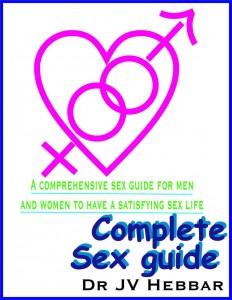By Dr Raghuram Y.S. MD (Ay) & Dr Manasa, B.A.M.S
Kama in actual terms means desire and pleasure. It is one of the four longings of life (purushartha chatushtayas). The other three pursuits are, dharma (moral living), artha (ethical earning) and moksha (spiritual salvation). When first three are followed and practised with devotion, throughout the life, they lead to spiritual liberation.
Read – 3 Basic Desires Of Life – Charaka Sanhita Sutrasthan 11
Kama, in terms of sexual desires and lust
Kama, commonly perceived in the meaning of ‘sex’ and ‘sexual desires’. Sex is one of the basic instincts of man, an inexhaustible source of physical and mental pleasure, an emotion, a need and a pathway to expand one’s clan and generation. Sex is good if practiced in a healthy and ethical way. It is a feel which a man / woman never exhaust or finish having. The craving never dies and it is natural. In a way, it has been a route of evolution.
Read – 6 Easy Tips To Stay Positive, Happy And Successful Forever
‘Everything in the world is about sex except sex. Sex is about power’. – Oscar Wilde
Love and sex are considered to be sides of the same coin, often yes, often not!!
‘Sex without love is as hollow and ridiculous as love without sex’ – Hunter S. Thompson
Now-days youngsters are desperate to have sex. Many part ways after doing that. There is no feel, no emotion; it is all about physical pleasure. Many have multiple encounters and keep counting. Love or marriage doesn’t stop them from doing that.
Read – Charaka Samhita Sutrasthana Chapter 1 – Quest For Longevity
Love is not wrong. Sex too. But when craving for sex goes beyond limitations it may become an obsession, a thought which keeps haunting and disturbing the person until he has physical sex or otherwise.
Here, kama can be viewed as lust, instead of love or good sex.
Lust is nurtured by wrong thoughts. They may lead to feel of guilt, depression when sex is not available at will and also to commit sexual offences or making one victim of addictions like smoking, drugs and alcohol. Here, sex is practised in unethical way. Thus, kama also defines lust.
Read – 8 Useful Tips To Inject Energy To Your Relationship
What else is Kama?
Kama is a term used to define pleasure, love, intimacy, kindness and like.
Kama also defines liking towards one or the other art forms like music, dance, painting etc.
Kama can be good and bad in different terms and meanings, in different situations and at different points of time.
‘The noblest pleasure is the joy of understanding’ – Leonardo da Vinci
Read – Message Of Love: Love Yourself
Therefore, all that we desire and wish to possess and the attempts made to attain those wishes are included under this term. When desired in a right way, following clean thought process, any desire brings pleasure and satisfaction in one’s life. Kama is not all about momentary satisfaction.
When the desires are obtained in good way, they will support the purpose of righteousness, i.e. dharma.
‘The essence of all art is to have pleasure in giving pleasure’ – Dale Carnegie
When desires are wrong, they lead one to do wrong deeds breaking all the ethical ways. Such a person tends to be a victim of greed. Excessive greed will lead to crimes, addiction and lust. This will lead to adharma (non-righteousness).
Read – Satisfaction Is What We Find Inside, Not What We Get
Facts and references about Kama
The term kama has been used in the ancient scriptures. We can find ‘Kama’ mentioned in Rig Veda. This treatise quotes Kama as the desire which is the primal seed and responsible for procreation.
One of the oldest known Upanishads, i.e. Brihadaranyaka Upanishad has used the term Kama to describe any form of desire.
We can often see that kama (pleasure) is most often explained with other two pursuits i.e. righteousness and possessions. We can find them explained together in Mahabharata too.
Read – Money, Ayurveda, Spirituality – How To Strike Perfect Balance?
This epic gives a broad explanation to the term Kama as –
‘Kama is any agreeable and desirable pleasure which is generated by the interaction of one or more of the five senses with anything congenial to that sense and also while the mind is concurrently in harmony with the other goals of human life i.e. dharma, artha and moksha’.
Master Vatsyayana (Kamasutra) –
‘Kama is happiness that is a phenomenon of the mind’. Vatsyayana further elaborates kama as pleasures that an individual experiences through one or more senses in harmony with one’s soul and mind.
Read – Incorporating Atma Jnana (Self Awareness) In Treatment – Case Study
Example –
Experiencing good music, admiring the beauty etc.
According to Kamasutra treatise, many art forms including dance, music etc are included in kama. Just like sex, these art forms are also means of pleasure.
John Lochtefeld –
‘Kama is desire, often sexual desire in contemporary literature. In ancient Indian literature, it includes any kind of attraction and pleasure such as those deriving from the arts’.
Karl Potter –
‘Kama is an attitude and capacity. A girl hugging a teddy bear and two lovers in embrace, both are experiencing kama’.
Gavin Flood –
‘Kama is love without violating dharma, artha and moksha’.
Read – An Ayurveda Tip For Better Health – Make Some Money And Be Rich!
Relationship of kama with artha and dharma
Pleasure is always related to righteousness and prosperity. All treatises and epics have stressed that righteousness is the most important goal among all four. If righteousness is neglected or not followed one would get indulged in unethical practices related to pleasure and prosperity. This would lead to personal fall and also chaos at social level. All these would become hindrance to attain salvation.
Read – Depression Causes, Ayurvedic Treatment, Tips And Remedies
Master Vatsyayana, in his Kamasutra treatise while accepting that righteousness and prosperity are superior to pleasure, also declares that Kama is as important and necessary as food and also tells that Kama is holistic with righteousness and prosperity. He doesn’t accept that Kama is an obstacle to moral and ethical life, to religious pursuits, hard work and prosperity.
He tells – ‘Just like good food is necessary for the well being of the body, good pleasure is needed for healthy existence of the human being. A life without pleasure and enjoyment is hollow and empty’.
Read – Treatment For Excess Desires – Naishtiki Chikitsa
Vatsyayana also accepts that there are obstacles in the pathway of obtaining pleasure in good and ethical ways. The master tells that just like one doesn’t stop farming in spite of knowing that herds of deer exist around your farm which can destroy your crops, one should not stop pursuit of kama because it has potential dangers around it.
He also tells that Kama is never in conflict with righteousness and prosperity. All these three entities coexist and also that pleasure results from the other two entities. Kama Sutra is not just a treatise of sex, sexual positions and pleasure. Jacob Levy tells that this treatise deals with philosophy of love and presents kama as an essential and joyful aspect of human existence.
Read – Happiness Through Wise Discrimination, Detachment – Viveka Chudamani
According to Hindu philosophy, pleasure / sexual pleasure is essential pursuit for every individual. It is wholesome when it is sought for with due consideration of righteousness and prosperity. Along with other two entities, Kama contributes towards holistic life and a balanced society.
Thus, righteousness, prosperity and pleasure are not only equally important, but are simultaneously important. Therefore they should not be considered as individual components of pursuits but an integrated network of pursuits which operate together and enable one to travel in the direction of spiritual liberation and also to obtain it.
Click to Consult Dr Raghuram Y.S. MD (Ayu) – Email / Skype











